%20bidrop.com-2016-11-17-153459%20-%20(132)%20copy.jpg?width=1024&name=(c)%20bidrop.com-2016-11-17-153459%20-%20(132)%20copy.jpg)
There’s a reason that family travelers like to visit Costa Rica. Whether you’re enjoying outdoor sports and activities that are fun for all ages, exploring the vibrant natural landscape, diving into some of their iconic cuisine, or simply kicking back and enjoying the “Tico” lifestyle, this country is practically tailor made to enjoy with your loved ones.
So if you’re eager to discover Costa Rica with your family, here are some tips on how to get the most out of this beautiful country.

Finding a destination that satisfies everyone in the family can be tricky, but it isn’t impossible. Everybody who has planned a family vacation worries about unmet expectations or worse, a bored spouse or kids.
The good news is the right balance of fun, excitement and experiences for the whole family is closer than you might think.
A quick flight from the continental US, Costa Rica has long been a favorite destination for world travelers. In large part, that’s because of its unique combination of natural diversity and family-friendly activities.
Add 21-century comfort and amenities, and you have an experiential travel destination unlike anywhere else. Here’s why Costa Rica rocks for families:
There’s a wide variety of family-oriented activities available in Costa Rica, from scuba diving and mountain biking to more relaxing activities like nature walks, relaxing on the beach, and sightseeing. Here are some family friendly adventures you’re sure to love:
With mountains and tropical forests in walking distance from gorgeous beaches, few places on earth offer more for families that love the outdoors. Offshore, Costa Rica is home to world famous surfing beaches and vibrant reefs that make for spectacular scuba diving. Out on the trails, you can move at whatever speed works for you: cut edges along the hillside on a mountain bike, or take a nature walk instead. There’s something for every age group in your family.
Of course, not every moment needs to be filled with action. Many travelers come to Costa Rica to get away from the noise and pressures of modern life. If this sounds like you, finding a quiet, peaceful beach will not be a problem. For those looking to lounge on the sand, Costa Rica has some of the finest beaches in the world.
There’s also a large community dedicated to wellness, with locations like Las Catalinas offering centering activities like yoga classes under an almendro tree.
Costa Rica is home to the kind of exotic animals that kids only ever get to see from afar – on video or in captivity– and lots of them! For example, you can canoe through Tortuguero National Park, which is full of rich mangrove forests that are home to monkeys, sea turtles, and sloths among others.
Speaking of sloths, Costa Rica is home to many natural sloth habitats like Cahuita National Park, where you and your family can see these slow moving and curious creatures in the wild. Sloths are one of the most iconic animals in Costa Rica, with a peaceful demeanor and a tendency to smile a lot, and a trip to the country offers the chance to learn more about them and contribute to their conservation.
Costa Rica is one of the most climatically and biologically diverse regions on Earth, and locals are dedicated to preserving and sharing that biodiversity with the world and future generations. Across the country, wildlife and natural ecosystems are protected in 29 national parks, 18 wildlife refuges, 8 biological reserves, and local protected areas. Even better, local businesses and government programs have put sustainable systems in place so you can immerse yourself and enjoy these climates without harming unique ecosystems.
Within these areas, a variety of excursions offer perfect opportunities to connect with nature and explore the country. In fewer than 20,000 square miles, Costa Rica is home to:
What sets Costa Rica apart from other destinations is that all of this diversity is accessible with a short car ride and, in some cases, on foot. This means far less time in planes, trains, and automobiles, and more time enjoying vacation with the family.
Any visitor to Costa Rica can tell you about the stunning beaches and vibrant rainforests of the country, which are part of the reason that it's such a popular world destination. But what you might not know is that there's also an old and lively culture in the country, one of good times, good food, and the pure life.
Thanks to a unique blend of rich local biodiversity and more than 500 years of international influences, local Costa Rican cuisine provides a direct connection to a rich Mesoamerican culture.
This diversity of recipes and flavors comes to life through fresh ingredients that are sustainably and locally grown, including ethically-sourced fruits and vegetables found nowhere else in the world.
Additionally, Costa Rica famously produces some of the world’s finest coffee and cocoa.
Don’t worry about being overwhelmed with unfamiliar and exotic dishes though: the local food culture tends to be on the mild side by Central American standards. It’s not about the spice, it’s about the flavor.
Pura vida is a Costa Rican phrase that translates roughly to "pure life", and is the country's national motto. It's a cultural concept, which means that if you ask any tico they'll have a slightly different explanation of what pura vida means to them. Some say that it's keeping a positive outlook when things go bad, others say that it's a call to enjoy the simple things in life, others say that it's a way to be grateful, and not worry too much.
It's a tremendously versatile phrase, and it can be used as a greeting or a goodbye, to describe how you're feeling, to roll with the punches, or to simply enjoy the good times.
For visitors to Costa Rica, the pura vida lifestyle is an invitation to share the beauty and good times, to embrace the simple life and enjoy the country with new friends.
Less car rentals, less public buses and trains, less hassle. All while surrounded by a lively community, rich ecological diversity, fresh food, and unique opportunities for adventure.
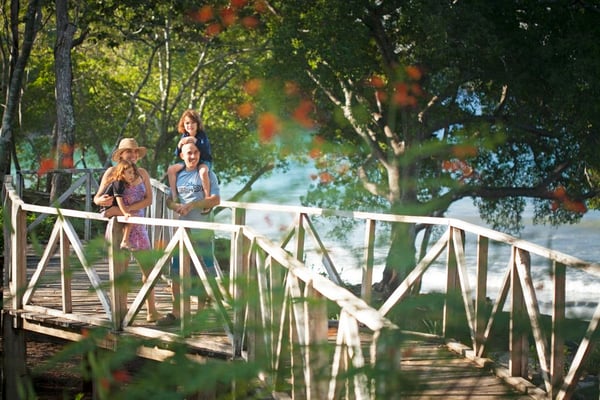
For family travelers, choosing a vacation destination can be equal parts frustrating and exciting. Maybe Mom and Dad love the history and the character of a place, but there’s nowhere for the kids to run around and play. Maybe it’s the opposite: the kids are happy, and there’s nothing to keep the grown-ups entertained. Or maybe there’s nothing for everyone to do together.
So, what activities can your family do on vacation in Costa Rica?
Costa Rica is among the happiest countries in the world, and it’s no coincidence. Located in the heart of Central America, the country has thriving ecosystems for the lover of forests, the beach, mountains, and traditional architecture.
Here are some fun-packed Costa Rica family vacation experiences:
Costa Rica is famous for its rolling forested hills and mountains, many of which extend right up to the coast. For mountain bikers, there are few better vacation destinations to hit the trails.
Mountain biking in Costa Rica allows you to immerse yourself in the natural world, catching glimpses of amazing wildlife including monkeys, pizotes, peccaries, and a range of beautiful exotic birds.
Las Catalinas is one of the top single-track mountain biking destinations in the American tropics, offering beautiful seaside views high above the villas without the strenuous climbs many other trails require. This means that trails are suited to riders of all skill levels, for a beginning family expedition.
For families seeking a bit more of a thrill, the medium grade trails at Las Catalinas are sustainably built to offer speed and excitement without harming the local ecology. Whatever your family's preference, Pura Vida Ride, a local partner down by Danta Beach, provides rental bikes and offers guidance and tours for visitors.
Scuba diving is an engaging and memorable vacation activity, and Costa Rica is home to some of the finest scuba diving in the New World tropics. Going offshore and exploring reefs for the first time is a life changing-experience for many travelers. It’s more than seeing some fish — you become immersed in a new world, with a rich diversity of life unlike anywhere else in the world.
If your kids are 12 and older, your whole family can participate safely thanks to training and certification through partners like ConnectOcean.
For those who prefer to stay above the waves, the waters around Costa Rica offer plenty of opportunity for enjoyment. Paddle boarding and sea kayaking are both popular activities along parts of the coastline where waves are more mellow.
Both kayaking and paddle boarding combine beautiful views with a light workout that can’t be beat. Take your family out on the water and you might just get a chance to hang out with seabirds, dolphins, whales, or even manta rays!
Love the water, but want a bigger boat? There are many different experiences available off the coast, with expansive views of the towering cliffs, sweeping forests, and welcoming beaches that mark the shorelines of the region.
Bahia Potrero is one of the finest sailing areas in the Pacific, complete with abundant wildlife and striking views of the coast. Sailing in Costa Rica doesn’t require any skills or experience; the Costa Rica Sailing Center will give you everything you and your family need for a relaxing day on the water.
The Sailing Center offer small boats (1 or 2 passengers) for rent and sailing lessons, and the Las Catalinas concierge team can arrange sailing trips on larger sailboats or catamarans for larger family groups.
Costa Rica is famous for its big-wave surfing. Experienced surfers from every corner of the world travel come here for fast, deep rides along world-class beaches like Pavones, Playa Negra or Playa Hermosa, to name a few.
But if you don’t want to tempt 25+ foot waves, there are safer alternatives that offer family fun. For beginning surfers, the Frijoles Locos offer family surf expeditions to the world famous Playa Grande.
Another option, Playa Danta, is an excellent boogie boarding and body surfing beach, where waves are typically moderate and safe for riders of any size. Tucked away from the prevailing southern swell, these waves are unmatched for family wave riding, especially at low tide.
What will your family do in Costa Rica?
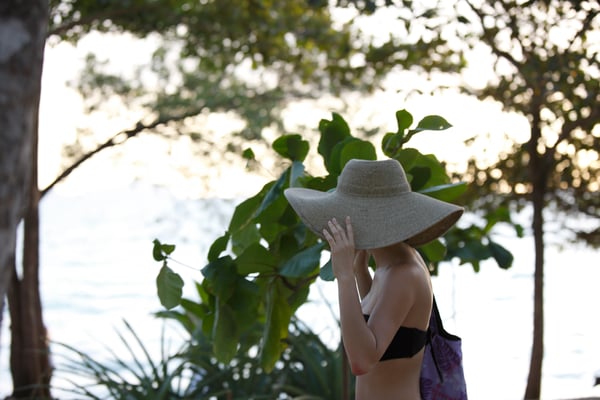
So, you’ve been reading up about Costa Rica, but you’re running into a challenge. There’s a whole lot to see and do, and it’s starting to seem like there’s no way you can possibly prepare for everything, from mountain biking at night to exploring the rainforest to hiking up a dormant volcano.
So what do you need to pack for Costa Rica?
The short answer is, not a lot. In most of the country, you can pack a light set of necessities and get most of what you need from local shops. After all, you certainly won’t need heavy jackets, and most of the adventure gear you’ll need — surfboards, mountain bikes, etc.— can be rented on site.
Still, spending time in San Jose will come with different considerations than a beach town like Las Catalinas, so here are a few things to keep in mind as you pack. To help we’ve put together a list to help you ensure you’re ready for your Costa Rican adventure.
Outside of some districts in San Jose, Costa Rica is a relatively laid-back place. People dress to suit the activities for the day, so you won't feel out of place in a pair of sandals and comfortable shorts in most places. Still, a more stylish outfit for going to dinner will definitely be a plus, especially if you find yourself out at a sunset restaurant like Sentido Norte.
As for comfort, temperatures in the tropics tend to stay warm year round, even overnight during the Costa Rican winter. At most, you’ll need a light sweatshirt for nighttime beach strolls depending on the season. Otherwise, wear comfortable, loose-fitting clothes to help stay cool and comfortable.
One of the most interesting parts of traveling to a new country is learning the language. English speaking travelers can manage in Costa Rica with only a little foreign language fluency, especially in urban areas, but nothing helps make friends faster than working together to figure out new languages. For example, at Las Catalinas many travelers say that learning to speak Spanish and communicate with their house mom was one of the most rewarding experiences of their trip.
With that said, a basic Spanish phrasebook or App definitely comes in handy — especially if you want to get out of town and explore some of Costa Rica’s smaller rural communities.
This is a piece of advice that particularly pertains to travelers visiting between May and November, which is the green season in Costa Rica.
If you’re looking to book a trip during this time don’t worry — in many parts of the country rainfall is often confined to short, intense bursts, and life goes on as usual rain or shine. Still, during these months it’s always good to have a light raincoat, especially when visiting one of the country's many rainforests.
Costa Rica is a fantastic place to be outside, on the beach or on the trails. But the last thing you want is a nasty sunburn on the first day you arrive. While you can buy sunscreen at just about any store along the coast, the selection can be a bit limited, and prices can be high. The quick solution –bring your preferred brand and make sure you get the coverage you need.
Most towns in Costa Rica do a very good job preventing widespread bug problems, but if you're heading out into the forests and jungles of the country, mosquitos and other pests are a fact of life. The most effective protection against these insects is a loose-fitting long sleeve shirt and pants, so when hiking in the forest taking this approach will be the best bet for preventing irritating bites.
In addition, bug spray comes in very handy. Like sunscreen, you can always pick up mosquito sprays and lotions when you arrive, but they can run a little pricey, so if you have one brand that works for you, well, bring it along.
Interested in boogie boarding or surfing in Guanacaste? Protect yourself from irritating sand burn and get an extra layer of sun protection with a rash guard. Much of the Costa Rica experience comes back to the coastline, especially out in the Northwest corner where beachfront towns like Las Catalinas are thriving, and having a well-fitting rash guard can make a big difference.
A lot of travelers will arrive at the airport with one pair of shoes — flip-flops, to be precise. This is a major oversight, though.
Much of the cultural and environmental wealth of Costa Rica is in its forests and jungles, and you will be doing a lot of walking. That is, after all, one of the things that make this corner of the world so great: a wide variety of ecosystems in walking distance from each other.
Bring a pair of sneakers or hiking boots and be ready for every microclimate this beautiful country has to offer
.
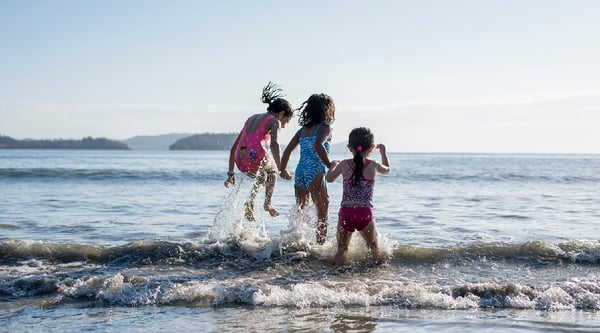
Visiting Costa Rica with kids is easier than you might expect. In fact, in many ways it’s more rewarding and more affordable to take a family vacation in Costa Rica than in many other popular destinations, especially for travelers coming from the U.S.
Vacation is supposed to be fun for everyone, and as a parent that can be tricky. Costa Rica is great for this reason because visitors have access to activities for the whole family (like sailing, mountain biking, and beautiful beaches) as well as comfortable and convenient accommodations.
So how do you make sure that your Costa Rican vacation with kids exemplifies the Pura Vida approach to life? Here are some essential tips:
The less comfortable aspects of travel can be easier for kids if they’re super excited about their trip.
Read educational pamphlets with your kids to help get them energized about your destination. Educate them on the local wildlife that they may see, especially the exotic birds and primates that they might get to encounter up close.
You can also build excitement by introducing kids to some of the foods they’ll get to try on the trip.
Costa Rica is home to a variety of delicious and fresh treats that kids absolutely love. If you want to get your kids excited, consider introducing them to some sweets like fresh sugarcane, tropical fruits like papaya, or Costa Rican chocolate. Just don’t give them the world-famous local coffee unless you want to be chasing them down the beach!
A lot of people think the weather is constant year-round in the tropics, but in truth tropical climates have weather just like anywhere else. In order to make your vacation as enjoyable as possible, you should plan your trip to Costa Rica to make sure you prepare for the weather.
There are two main seasons in Costa Rica. The dry season, which extends from December to April, is ideal for vacationers who want to spend sunup to sundown on the beach. During the dry season, you might not see rain for days or weeks.
During the green season, rain is more frequent, but tends to be short and intense, and life goes on rain or shine. This time of the year is great for forest adventures, as the rain will replenish the foliage and bring out the full beauty of its colors. Also, there’s still plenty of sunshine during the green season, but vacationers should come prepared for showers, especially when visiting the country's rainforests.
Plan ahead for your ideal weather and you should have an excellent trip.
Parents tend to be contingency packers. When you have a young child, you quickly learn to prepare for everything, and when you’re traveling to an unfamiliar place that can create a whole lot of stress.
Don’t worry though: having access to what you need is a big reason that Costa Rica is so great for families. You can explore forests filled with wild monkeys, macaws, and sloths in the morning, and in the afternoon you can pick up artisan wines, vegan turkey, and shop your favorite brands like Howler or Patagonia.
You’ll want to bring preferred brands for certain products, but if you’re staying somewhere like Las Catalinas, you can easily walk to nearby shops to supplement your supplies.
You know your child better than anyone. When you’re on vacation, keep in mind that the added stress of travel plus unfamiliar routines and lodging can take a toll.
When you’re planning your itinerary, make sure you balance action-packed activities with plenty of rest time. Finding ways to create parallel routines to the ones you normally have at home — naps, snacks, meals, etc. — can help keep kids comfortable.
Costa Rica is an excellent destination for families, with plenty of activities for parents and kids alike. With a little planning, you can make your family vacation to Costa Rica an adventure to remember for years to come!
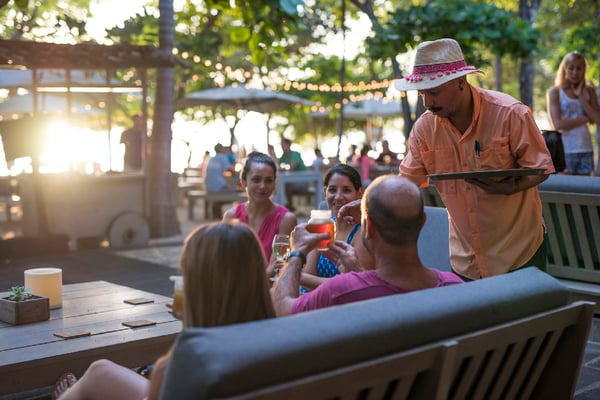
One of the most fun parts of coming to Costa Rica is getting the chance to learn some Spanish. Many ticos (Costa Ricans) are willing to help share their knowledge, and visitors often say that working together to learn a new language was one of the most fulfilling parts of their trip. With that said, there is one phrase in español that every traveler should be well acquainted with before arrival: pura vida.
Pura vida, translated literally, means “pure life.” But in Costa Rican culture, this expression has profound meaning.
Pura vida is a greeting and a farewell; it can mean “I’m doing well” or “everything’s cool.” Pura vida can also be used to signal something like “oh well” or “so it goes.” It’s a wonderfully versatile exclamation that sits at the heart of Costa Rican life.
One expat writes that his best definition of pura vida is simply “nothing but life.” Other sources say it’s about the same as “hakuna matata.” However you choose to define this term, it means a lot to Costa Rica and its people.
Instead of searching for one concise definition, it’s more valuable to see pura vida from the perspective of how it feels. Pura vida helps to describe a cultural tendency in Costa Rica to value and enjoy the simplest things in life. It’s finding the beauty in the essentials, and living for those easygoing joys.
Pura vida is enjoying a meal with the family. Pura vida is coexistence with nature. Pura vida is clocking out of the office and leaving everything behind for a few precious days. Pura vida is perfect surf at sunrise. In other words, pura vida is the good life.
But Pura vida isn’t just an colloquialism that ticos like to use. It’s the official national motto, which says a lot about the priorities of the Costa Rican people, and just might be part of the reason that Costa Rica has one of the world's blue zones.
Most accounts tie the Costa Rican origins of pura vida to the release of a Mexican film of the same name in 1956. That film featured a protagonist played by comedian Antonio “Clavillazo” Espino, who uses pura vida as his eternally optimistic catchphrase — a way to show he’s happy, even when nothing seems to go his way.
By the 1970s and 80s, pura vida had become shorthand for the sense of positivity and hospitality that had come to define the nation.
At the time, things were going great for Costa Rica, thanks to its peaceful political climate and stable, tourist-friendly economy. Over time the term strayed from being an expression of happiness in the face of hard luck into a catch-all way to describe good times.
For visitors, pura vida is a reminder of why Costa Rica is one of the happiest nations on Earth. It’s a linguistic touch that expresses the joy that people from all corners of the world feel when they step off the airplane. For anyone who has visited Costa Rica, pura vida connects you to vibrant memories of natural beauty and unique culture.
For ticos, pura vida is an especially important phrase, because it reminds them of home no matter where they are. It also helps to identify fellow ticos anywhere in the world. It’s a bond among the community, a clarion call to prioritize the simple things in life.
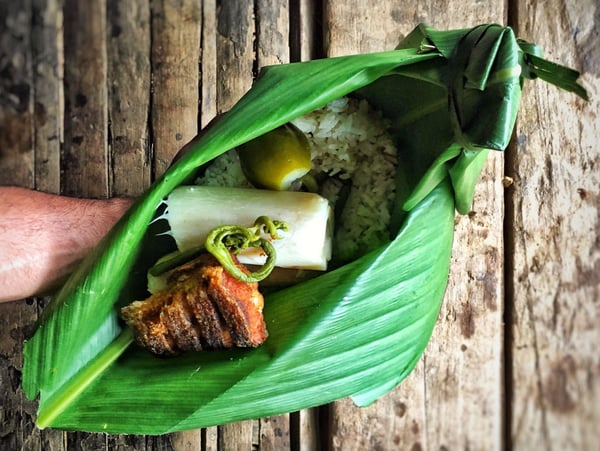
When most people think of Costa Rica, they think of natural beauty — the rainforest and the country's many tropical beaches. People who have visited may think of its pura vida lifestyle. But what you may not realize is that this Central American vacation hotspot also has a rich culinary tradition with some iconic dishes.
Let’s take a look at some of the famous foods and beverages that visitors to Costa Rica should definitely give a try.
Sometimes considered the national dish of Costa Rica, Gallo Pinto (which translates to “spotted rooster”) is a hearty mix of beans and rice.
While this delicious duo is common throughout Latin America, they take it especially seriously in Costa Rica. Combining tender stewed beans, fluffy rice, and a mix of local veggies, Gallo Pinto is a classic dish that’s prepared slightly differently throughout the country. For example, on the Caribbean side of the country, Gallo Pinto becomes "Rice and Beans", a dish made with coconut milk, coconut oil, red beans, Panamanian chili, and thyme. No matter where you try this dish, you’re sure to be experiencing a little bit of the local culture and flavor.
And if you’re looking for a thoroughly Costa Rican experience, don’t forget to ask your server for some Salsa Lizano.
Created in 1920 by Prospero Lizano, this savoury condiment was modeled on Worcestershire sauce from England — but it packs a signature kick that makes it worth seeking out. Much like Gallo Pinto, every Salsa Lizano is different, made from ingredients as diverse as carrots, chili peppers, cucumbers, and cauliflower, and it’s a sauce that goes great with almost everything in Costa Rican cuisine.
If you’re a lover of fresh fruit, this Costa Rican beverage just might hit the spot. While Americans are mostly used to a soft drink selection limited to sodas (and maybe iced tea), in Costa Rica fresh fruit juices are the star of many drink lists.
While classic fruits like pineapple and watermelon are almost always available, for the adventurous there are some key Costa Rican specialities worth trying. Guanábana, also known as soursop, tastes something like a cross between a banana and a pear. Cas, a form of sour guava found only in Central America, is another local favorite. And Maracuyá, aka passionfruit, is a tangy, sour Latin American specialty. When mixed with some sweetener in a juice, it tastes a bit like a tropical lemonade, excellent for a day on the beach!
Everyone knows that Costa Rica is famous for its rich, sustainably produced dark chocolate, but when you take a trip to the source of this beloved sweet you’re in for a surprise treat. Cacao fresco, Spanish for fresh cacao, is the name for the sweet, tangy flesh of the cacao fruit — the one that surrounds the seeds that will be processed into chocolate. Just one taste and you’ll have a new perspective on one of the world’s favorite foods.
Spend any time on Costa Rica’s shorelines and you’re bound to develop a craving for fresh seafood. And while there are plenty of classic Costa Rican preparations, if you want the freshest flavor possible then you’ve got to try ceviche tico.
While the basics of ceviche are relatively standard throughout Latin America — fresh raw seafood, citrus, chili peppers, and cilantro — Costa Ricans add their own special ingredient: ginger ale. Usually served in the country with a side of crackers (galletas soda) and ketchup, this unique addition to the recipe gives ceviche tico a subtle sweetness and tang that makes it memorable and one-of-a-kind.
Beyond its natural beauty, Costa Rica has a rich culinary culture that has given rise to some iconic favorites. Whether you’re tasting cacao fresco while touring local chocolate farms or enjoying a ceviche tico during a sunset stroll along the beach, the many flavors of Costa Rica are sure to have something for every traveler’s palate.
Planning ahead is key to enjoying any family vacation, but with the right prep traveling with a spouse and kids can be a memorable experience to be treasured for a lifetime. We hope that this guide helps you prepare for your dream trip to Costa Rica, and with it the chance to relish its diverse outdoor activities, iconic foods, and the rich spirit of its people.
See you soon.